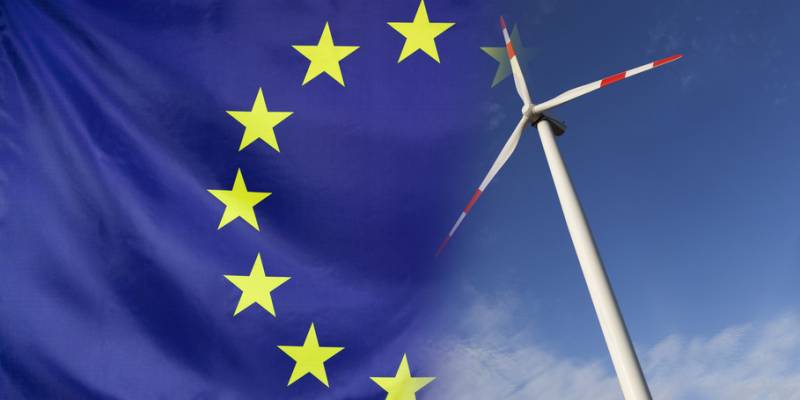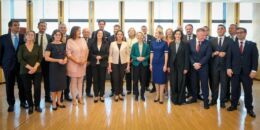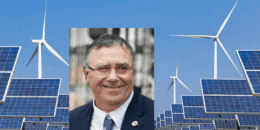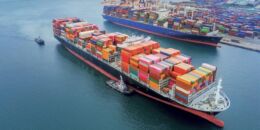With the completion of the Clean energy for all Europeans Package (see our article here) the EU is at the forefront of the energy transition and is considered to have built “the world’smost ambitious and advanced climate and energy framework”. But there is no time for complacency: the Special Report by the UN IPCC issued in October 2018 warns of the irreversible climate impacts of global warming of 1.5 °C above pre-industrial levels.
The current level of global commitment, even with the implementation of the Clean Energy Package, does not make it possible to reduce greenhouse gas emissions enough to remain under 1.5°C global warming. Faced with this challenge, the EU must adopt a longer-term vision of its climate change mitigation strategy, hence the launch in November 2018 of the Vision for A Clean Planet for All, also called the 2050 Long-Term Strategy.
The Strategy is composed of eight proposals or scenarios that Member States could follow in order to meet their EU Paris Agreement commitments. Five of these scenarios achieve just above 80% greenhouse gas emission reductions and scenario n°6 combines various options developed in the previous scenarios to reach 90% net greenhouse gas reductions. Only the 7th and 8th Scenarios are aiming towards carbon neutrality (100% greenhouse gas emission reduction). It is absolutely crucial for the industry to be aware of these scenarios and their content.
The scenario that will be chosen by Member States will define the decarbonisation ambitions as well as the corresponding technologies and investment solutions that will be translated into EU legislative measures in the coming years.
What is in the EU’s climate mitigation toolbox?
The five scenarios aiming for a 80% emission reduction are the following:
- The ELEC scenario is built around a switch from the direct use of fossil fuels to electricity ;
- The H2 scenario is built around a switch to hydrogen ;
- The P2X scenario is built around a switch to e-fuels (also called “power to X”) ;
- The EE scenario is built around a strengthening of energy efficiency measures ;
- The CIRC scenario is built around the uptake of the circular economy.
Scenario n°6 serves as a bridge between the first and third categories of scenarios with a target set at 90% emission reductions:
- The COMBO scenario combines the actions and technologies of the five previous scenarios and relies – but only to a limited extent – on negative emissions technologies.
The last two scenarios aim at carbon neutrality by 2050, which would be the only coherent target with a less than 1.5°C global warming:
- The 1.5TECH scenario combines all previous technologies and relies heavily on the deployment of biomass and of carbon capture and storage technology.
- The 1.5LIFE scenario relies less on technology options and more on changes to consumer preferences and lifestyles in order to achieve a fully circular economy.
All eyes on Member States and on the 9 May Sibiu Summit
Since the Commission has unveiled its Strategy, the European Parliament has had its say on which of the eight scenarios it would like to see translated into reality. In a non-binding resolution, adopted in March with 369 votes to 116, MEPs strongly pushed in favour of the pathways that would deliver carbon neutrality, namely scenarios 1.5TECH and 1.5LIFE. But the final decision lies in the hands of Member States. Heads of States will meet on 9 May at the Sibiu Summit to discuss the future of Europe and the Long-Term Strategy and the various proposed scenarios should be among the hot topics.
In the run-up to the publication of the strategy, ten Energy and Environment ministers from Denmark, Finland, France, Italy, Luxembourg, the Netherlands, Portugal, Slovenia, Spain and Sweden had co-signed a letter to urge the Commission to include carbon neutral scenarios. It can therefore be expected that they will advocate in favour of the 1.5TECH and 1.5LIFE scenarios during the Summit. But these countries will not be the only ones in the room: Germany, Poland, Hungary and the Czech Republic have refused to specifically link EU climate action with the 1.5°C objective, which leads to think that they will push in favour of less ambitious scenarios. What happens at the Sibiu Summit and which scenario ends up being chosen by Member States will be decisive in regards to the level of decarbonisation the EU can hope to achieve by 2050. For this reason our advice at EdEn is for all the industry stakeholders committed to achieving carbon neutrality to keep the pressure on and urge governments and Heads of State to adopt the strongest and most ambitious stance on 9 May.







